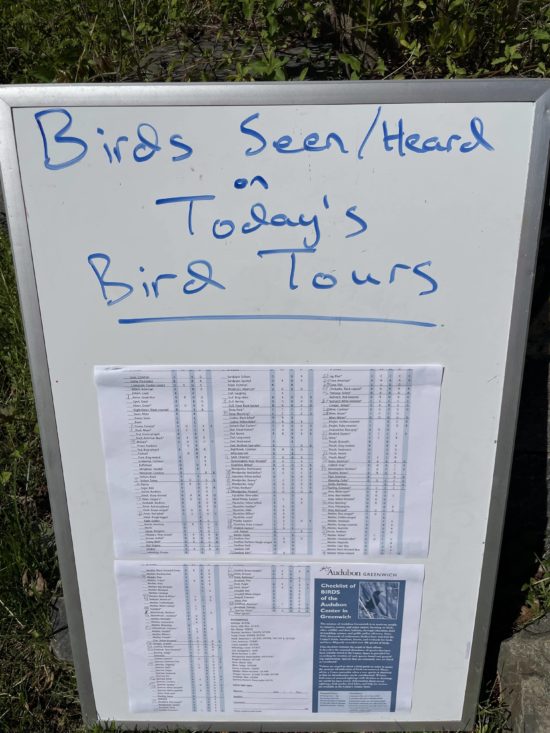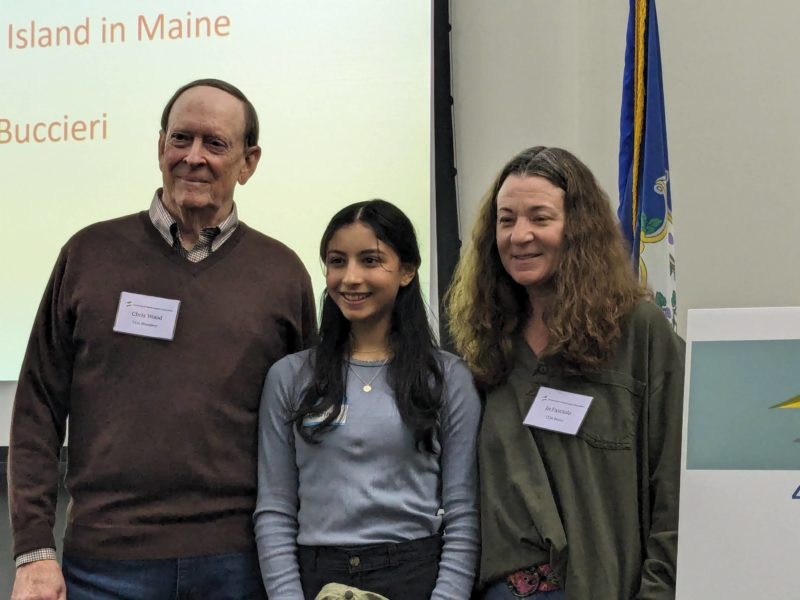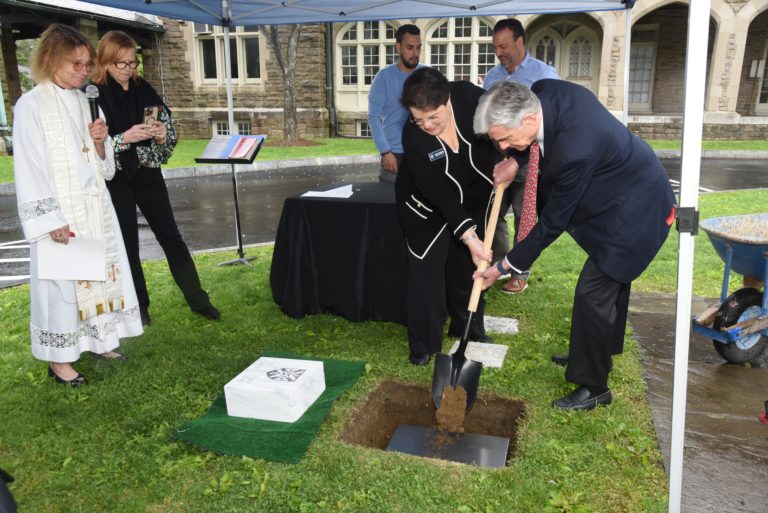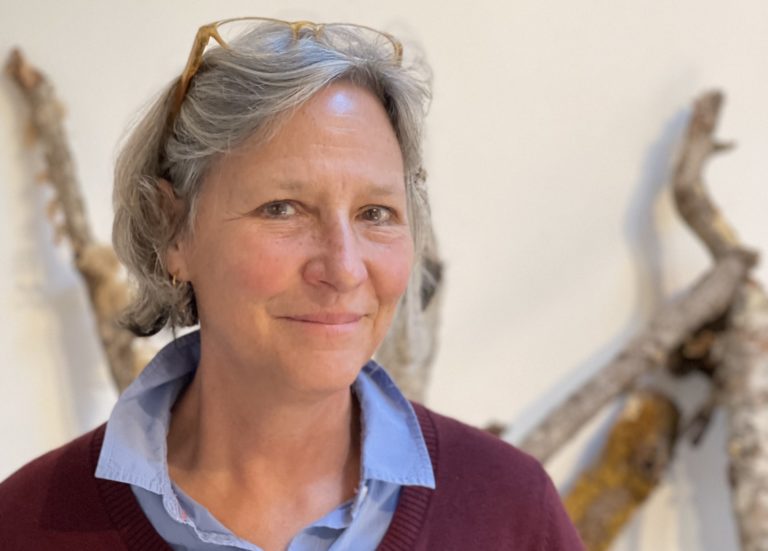
By Anne W. Semmes
Think Spring, think Greenwich Audubon Bird Breakfast. It was a bright and sunny spring morning last Saturday atop Riversville Road. The spirited birders arrived early with their binoculars for a bird walk before a fully booked, and free breakfast. Senior Coordinator of Education Ryan MacLean was there to welcome them and divide them into five smaller groups to explore different areas of Audubon’s impressive terrain.
This reporter joined up with Cynthia Ehlinger’s group to travel down the road to Fairchild Wildflower Sanctuary on N. Porchuck Road. Ehlinger would be leading the First Sunday bird walk at Greenwich Point the next day. Also in her group was Lisette Henrey who has served as educator at Audubon, and Bing Bingham, an artist of nature newly returned to Greenwich.
Fairchild Wildflower Sanctuary
The entry board at the Sanctuary tells the tale of the varied habitats across its 127 acres, shaped by a Benjamin Fairchild who in the 1890’s “created a natural garden containing the wildflowers, trees, ferns, and other plants native to Connecticut,” that surely continues to bring a wide assortment of bird life. Pausing in the parking area Ehlinger began identifying a host of them.
She was hearing, “Pileated Woodpecker… Wood Thrush… Red Belied Woodpecker… Carolina Wren… Northern Perula Warbler,” then pointing up to, “An American Robin building its nest in that fork in the tree.” We journeyed on to a pond bursting with green growth, and so quiet, until Ehlinger called, “Common Yellowthroat,” and “Black Throated Warbler.” Then a Wood Duck flew over the pond. Walking along a narrow boardwalk was heard an Ovenbird call, then a Hairy Woodpecker, then the walk took the group into an open field.
Flying back and forth across the field studded with Bluebird nest boxes were Tree Swallows, but half hidden in surrounding low trees were those Bluebirds perhaps with their eyes on one of those nest boxes. “Red winged Blackbird,” called Ehlinger, “Kingbird… Tufted Titmouse…female Orchard Oriole.” A young girl was all eyes on her phone getting help with bird identification from that Cornell app, Merlin.
It was another young girl, 16-year-old Cristina Buccieri, who was honored at the Breakfast with Ehlinger standing by in her office as vice president of the Connecticut Ornithological Association (COA). “Every year,” began MacLean, “The COA’s George Zepko Memorial Scholarship Award goes to a young teenager to provide them with a fully paid scholarship to go to Audubon’s Hog Island Summer Camp in Maine to learn from world renowned ornithologists like Scott Weidensaul and others.” Buccieri had grown up at Greenwich Audubon from age 7 first coming to the Hawk Watch. “Since then, not only has her love for birds skyrocketed, but she’s also written news articles in her local papers on how to prevent bird window strikes.”
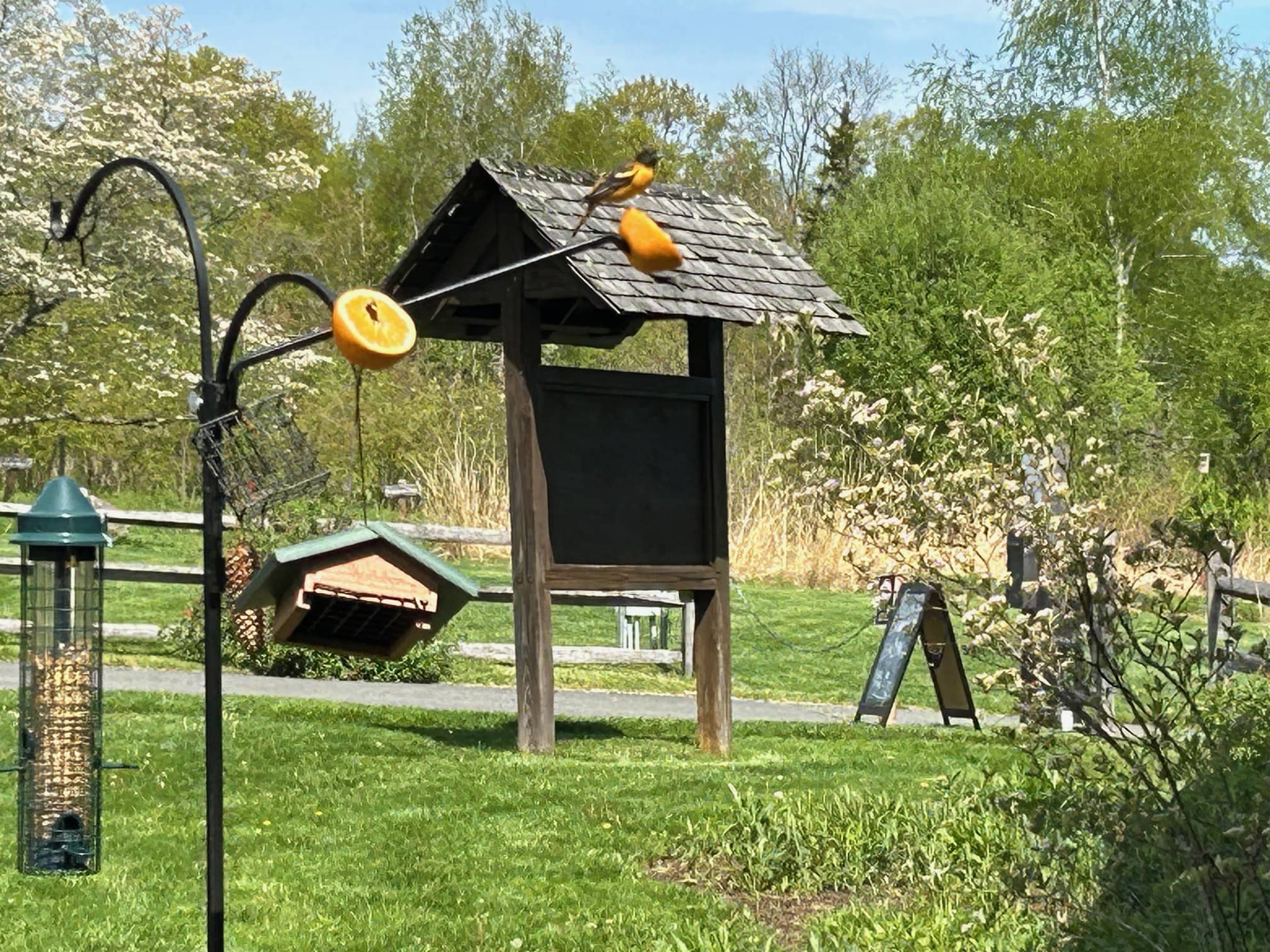
The Bird Breakfast
With all five groups now gathered in the historic Barn – 120 strong with some arriving from New Jersey and Massachusetts, with their plates filled with pancakes, scrambled eggs, bacon, and more, MacLean gave a little history. “This is our longest running traditional Spring event that has run from the 1950s in this very space. Just in this corner, Roger Tory Peterson and other famous ornithologists have sat, studied, and enjoyed birds just like you are doing today.” He then thanked the staff and volunteers for “the delicious food you’re eating,” and for “our director, Rochelle Thomas for the work she has done in this past year, championing events like these for how important they are to our Center and our organization.”
MacLean shared also how Audubon Connecticut and Audubon New York have combined to have “a two-state office where we are working together…. We are fortunate to have one of the highest concentrations of Audubon chapters in the entire country where you’re able to share in birding with everyone.” Included in that is the Bedford Audubon Society. “And we are very happy to have its executive director Bill Cavers here today,” said MacLean, “with his table full of great information on upcoming field trips they have.”
Working the Checklist of Bird Species Seen and Heard
The time came to address that checklist of birds seen by those five groups. “We’re going to do this Christmas Bird Count style,” said MacLean. “We’re going to go through the list of species and call them out. If you saw or heard that species, all you got to do is say yes. Great Blue Heron?” “Yes,” said Ehlinger. Any duck species? Wood Duck?” “Yes.” Bald Eagle” No hands. Broad wing Hawk? “Not September yet,” said MacLean. “American Woodcock?” He added to the silence, “Just a few weeks ago, one of our staff members, Kale Bryden was lucky to see a mama Woodcock with two fluffy babies and they’re all grown up now.”
“Great horned Owl? I’ve been hearing them recently…Brown Thrasher? We had a bird singing here for about two weeks. We were hoping he was going to stay here to breed. It seems when all these other new migrants moved in, he said this neighborhood has gotten too crowded for me…Common Yellow Throat?… So that is 67 species – we’re close to 70 species, and not only are they setting up their territories to breed, but they’re using this as one of the most important international bird hotels on their migratory journeys. And if we didn’t have this here and we weren’t able to keep protecting it, these birds wouldn’t have these places to go.”
Bird Banding
Before the crowd dispersed to see the nearby bird banding, MacLean spoke of the important focus this year on World Migratory Bird Day. “The theme this year is insects and just how crucial insects are to birds. We have so many of these flowering apple blossom trees that bugs are swarming to. The birds are coming to the flowers because they know the bugs are there to eat the flowers.” And what our town is doing to protect those insects he pointed to. “You may have heard Greenwich has finally passed a leaf blower ordinance that bans the use of gas-powered leaf blowers starting from Memorial Day through September. This will protect our birds and our bugs, like our fireflies.”
Behind a nearby table stood bird bander Corrie Folsom O’Keefe director of Bird Conservation for Audubon CT, holding in her hand a Wood Thrush. Caught in a net, its age and sex were being determined, wings measured, then banded. “Would anyone like to release the bird back into the wild?” O’Keefe asked. A young girl’s hand followed her “Yes,” and after being carefully taught how to hold it, then release it, the Wood Thrush fast flew to the woods.
Postscript: A question needing to be asked was how that count of nearly 70 species compared to previous Bird Breakfast years? “Likely lower than previous years as we are still anticipating larger waves of migratory birds as we approach the middle of the month,” said Ryan MacLean. “However, due to global bird population declines it is certainly less total birds than there have previously been.”
